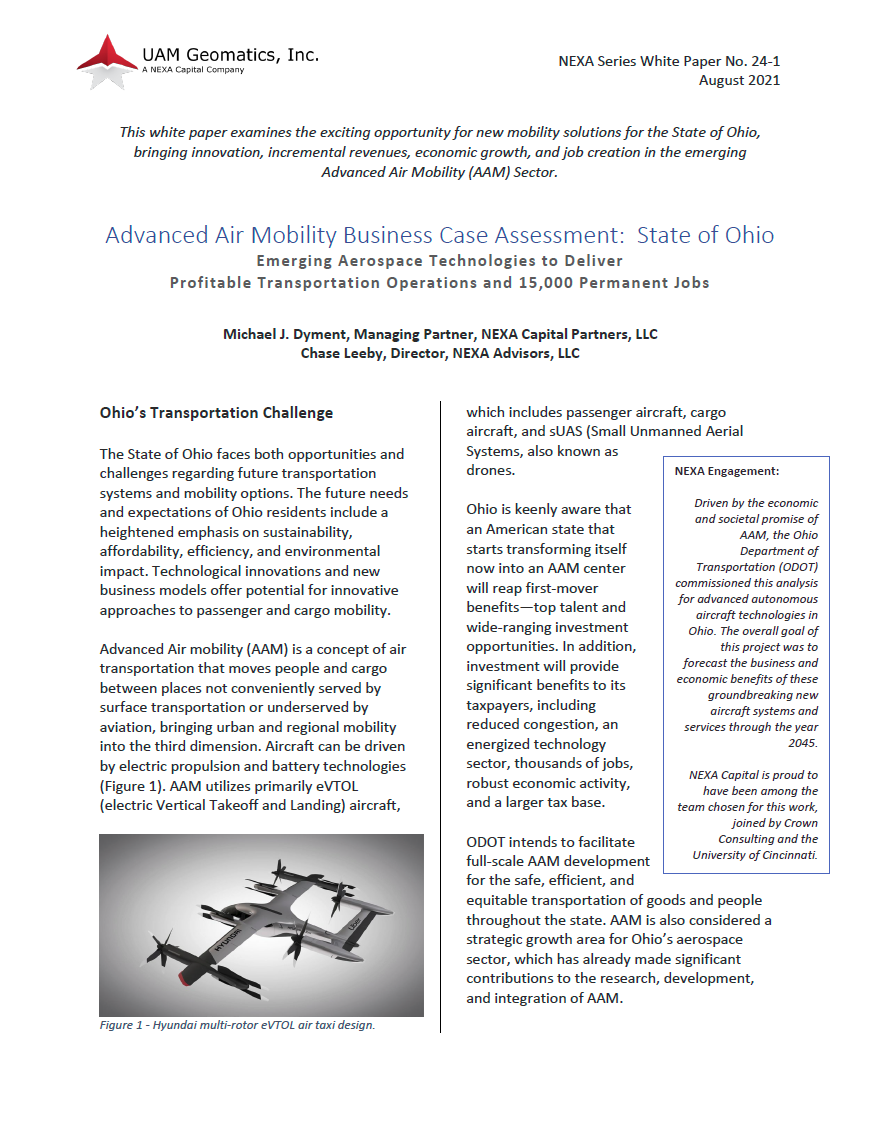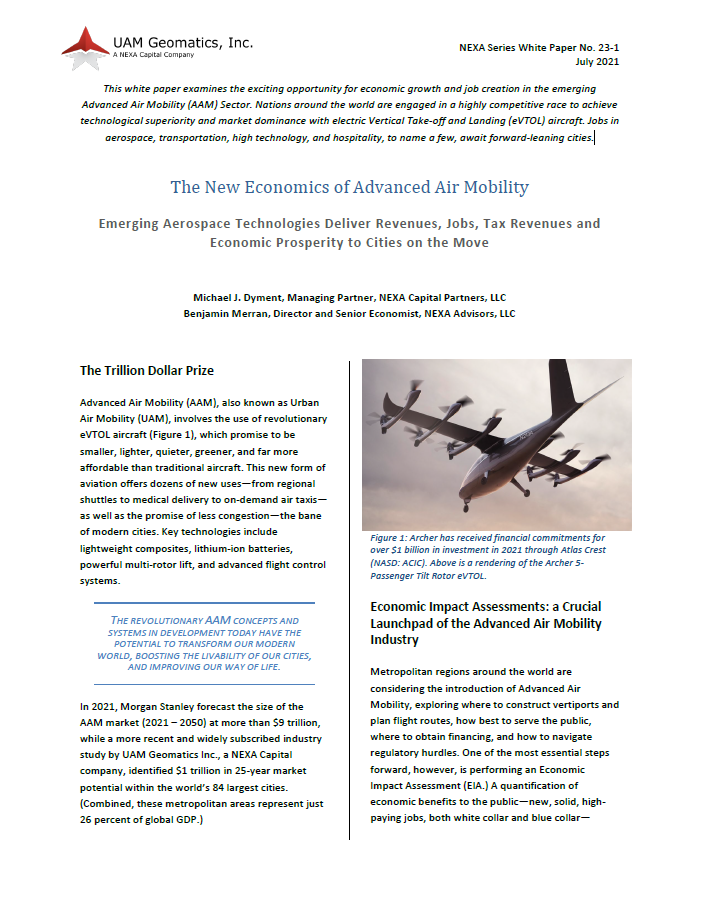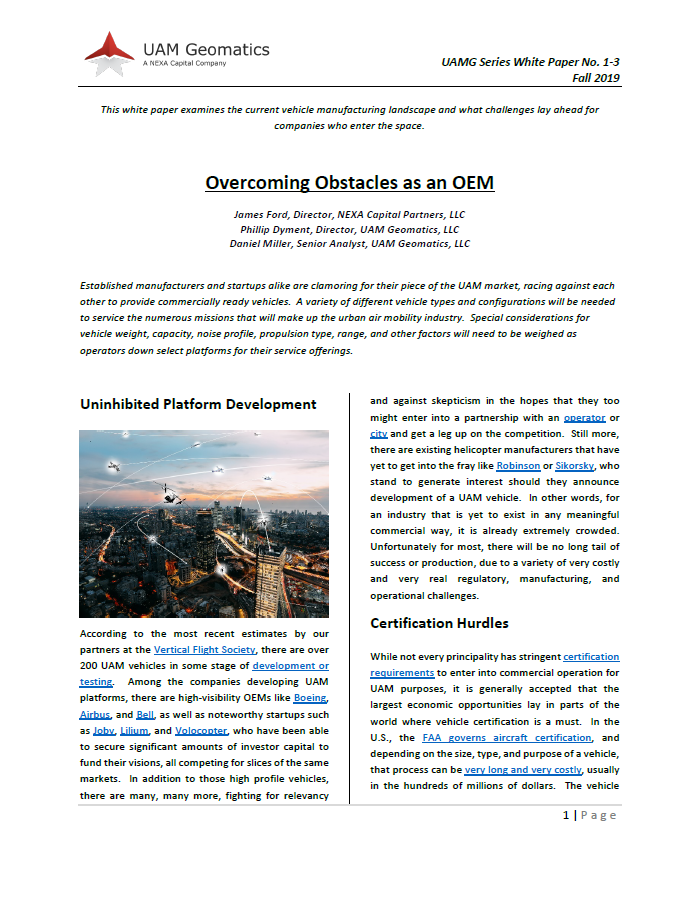Reports and Commentary
Venture investing—funding and expertise—is considered crucial for accelerated defense innovation. However traditional venture investment will remain difficult to attract due to the unique challenges of U.S. Department of Defense (DoD) supply chains. The DoD is currently seeking to “implement capital investment strategies proven in the commercial sector to shape and scale investment in critical technologies and assets.” The primary challenge lies in replicating private sector venture returns, which involves extending funds to high-risk technology developers due to their emerging status and drawing in investment partners with limited or no leverage options. This paper proposes a pilot program to prove the effectiveness of a high leverage fund model, scaled to satisfy longer term hard-tech investments, designed to significantly reduce the investment barriers faced by the DoD to strengthen the defense supply chain's resilience.
Virginia’s Advanced Air Mobility Future
Our latest report on taking advantage of the unique business and aviation ecosystems in Virginia to lead it into the future of AAM and sUAS
Advanced Air Mobility Comes To Arkansas
The next generation of aviation comes to The Natural State
Exciting Opportunities to Improve Urban Mobility of People, Goods and Services Without Adding Roadways, Lane Miles or Surface Vehicles
This white paper examines the exciting opportunity for new mobility solutions for the State of Ohio, bringing innovation, incremental revenues, economic growth, and job creation in the emerging Advanced Air Mobility (AAM) Sector.
This white paper examines the exciting opportunity for economic growth and job creation in the emerging Advanced Air Mobility (AAM) Sector. Nations around the world are engaged in a highly competitive race to achieve technological superiority and market dominance with electric Vertical Take-off and Landing (eVTOL) aircraft. Jobs in aerospace, transportation, high technology, and hospitality, to name a few, await forward-leaning cities.
This paper is about the economic benefits derived for Greater Vancouver and British Columbia from new mobility options, making use of the underutilized airspace above metropolitan areas. How will residents benefit through creation of jobs and increased economic prosperity? How will local governments benefit from increased tax revenue? What will the expected “ripple effect” of increased economic activity be?
This paper is about new mobility options available to metropolitan areas of the world, making use of the underutilized airspace above cities, and their expected societal and economic benefits. It is also an exploration of how Vancouver may become North America’s first Advanced Air Mobility (AAM) city, with the opportunities and challenges involved in being first. Our question is: How should Vancouver go about building an enhanced, sustainable, and safe transportation economy, with the goal of increasing accessibility and quality of life for all communities?
Helicopter operators stand at an inflection point, a powerful trifecta of looming societal crisis, technology and opportunity, where the past collides with the future, ushering in extraordinary benefits to the industry and society at large. In the coming years, traditional helicopters will, to a large extent, segue to electric vertical take-off and landing (eVTOL) aircraft: quieter, safer, and less expensive to own and operate.
And one of the biggest early beneficiaries of eVTOL aircraft will be the world’s helicopter operators. This white paper, prepared for HeliExpo 2020, explains everything.
This white paper addresses the need for a public-private partnership approach to Urban Air Mobility, with an emphasis on consortia, on a city-by-city basis to create cost-effective funding and infrastructure development.
This white paper examines the current vehicle manufacturing landscape and what challenges lay ahead for companies who enter the space.
Business aviation is evolving as quickly as ever, and it includes new technologies and transport modes. Key among these is a development known as Urban Air Mobility (UAM), which incorporates remarkable technological advantages in electric motors, rotors, batteries and flight automation. This technology will become reality within just a few years, and will have profound implications for business aviation.
This white paper provides an example of how geomatics tools can be utilized to conduct sophisticated market analysis that provides actionable insights for industry stakeholders, whether they be operators, investors, or policy makers.
This white paper addresses the importance geomatics will have on the emerging urban air mobility industry, and how NEXA is addressing geographic knowledge gaps through innovative geospatial technologies, allowing companies to prepare for the future of UAM on a market-by-market basis.
This white paper examines the opportunities for Congress and the Trump Administration to use existing FAA authority and new management reforms, innovative financing mechanisms and private sector capital—adopting governance models applied successfully throughout the global Air Navigation Service Provider sector—to modernize America’s civil aviation infrastructure.
This white paper examines the opportunities for the Trump Administration to use FAA management reforms, innovative financing mechanisms and private sector capital—adopting governance models applied successfully throughout the global ANSP sector—to accelerate the modernization of America’s civil aviation infrastructure.
This white paper examines the promise of innovative financing mechanisms and private capital to accelerate the modernization of America’s civil aviation infrastructure, as has been used for other modes of our U.S. transportation system, and globally throughout the ANSP sector.
FAA Infrastructure Modernization under the Trump Administration
Core Principals of Innovative Financing for Future FAA Capital Programs

















